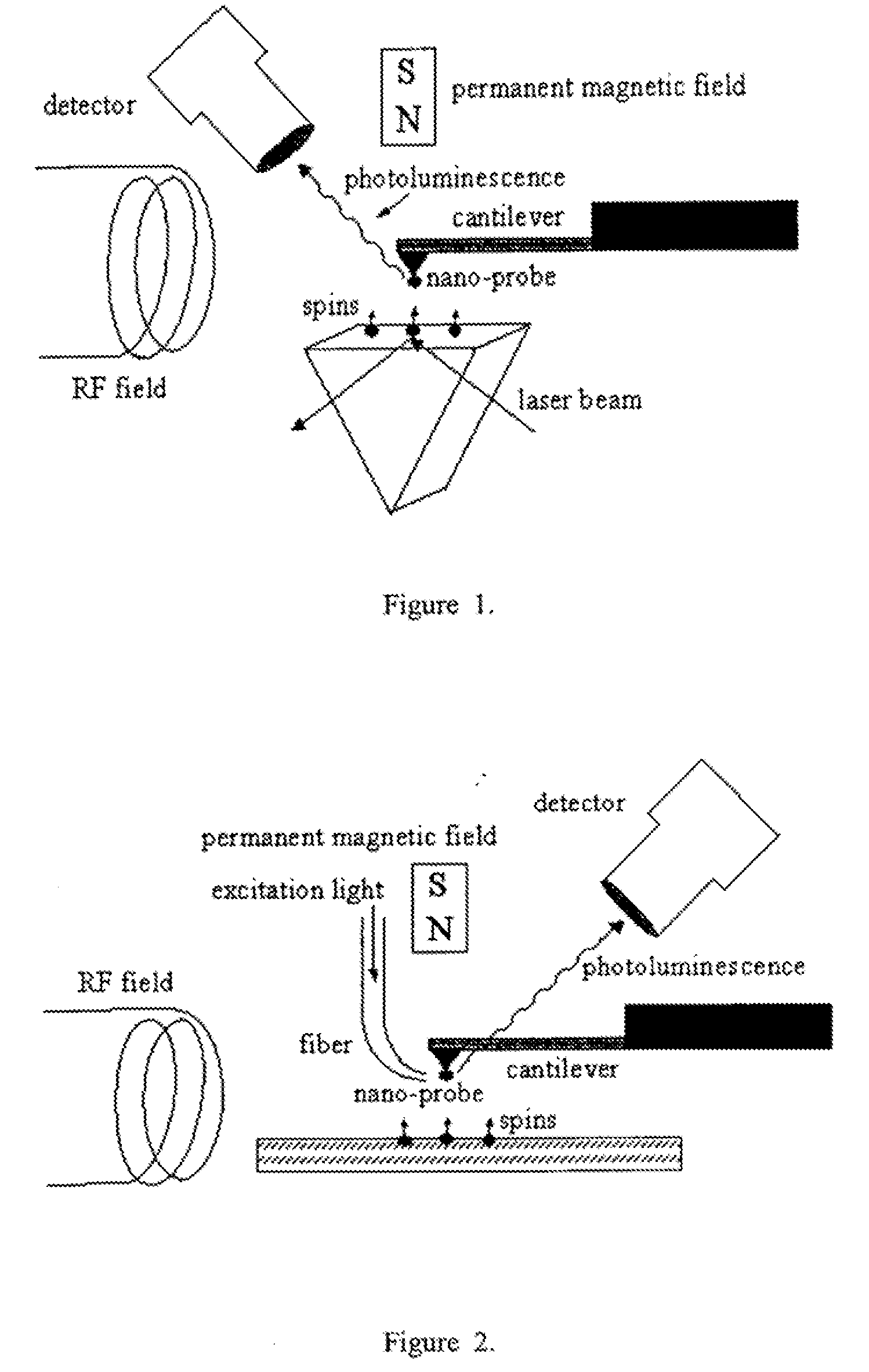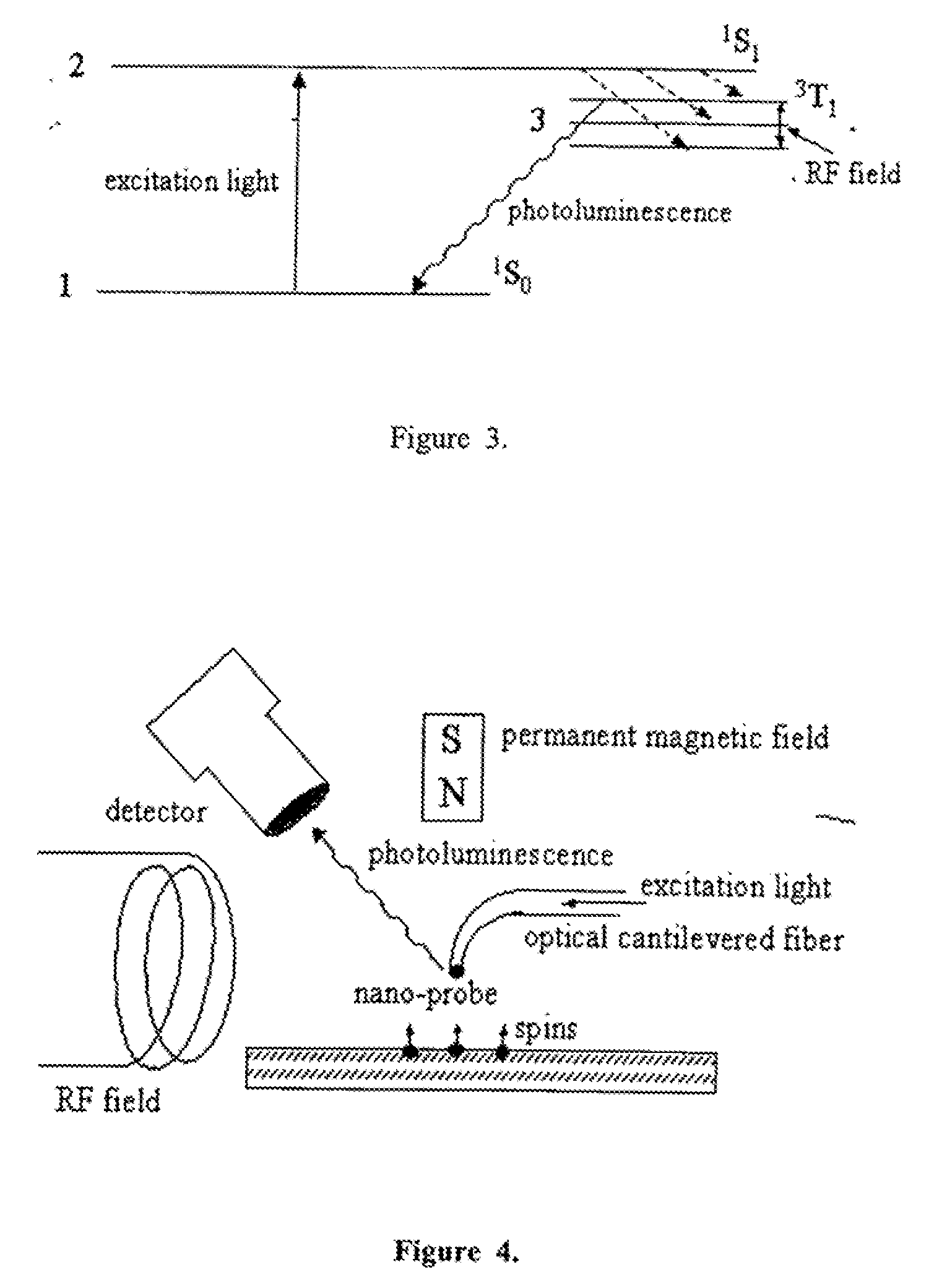Spin microscope based on optically detected magnetic resonance
a magnetic resonance and spin microscope technology, applied in the direction of mechanical measurement arrangements, mechanical roughness/irregularity measurements, instruments, etc., can solve the problem of limiting the lateral resolution of odmr to the size of the light spot, using stm and afm devices, and not being able to provide information about three-dimensional structures
- Summary
- Abstract
- Description
- Claims
- Application Information
AI Technical Summary
Benefits of technology
Problems solved by technology
Method used
Image
Examples
Embodiment Construction
[0015]In the present invention a modification of the optically detected magnetic resonance (ODMR) technique is described which is free from the limitations of the conventional ODMR method. In this approach a photoluminescent nanoparticle 1 or other photoluminescent center located on the tip apex of a micro-cantilever 4 exhibits ODMR in the vicinity of unpaired electron spins 2 or nuclear magnetic moments in the sample 3. We have identified several approaches to this spin microscope based on ODMR, the general layouts of which are shown in FIGS. 1,3-5. FIG. 1 presents a design based on the apertureless scanning optical microscope, which exploits the highly sensitive atomic force microscope (AFM) tip modified by implanting a nano-size photoluminescent particle 1 in the apex of the tip. The sample 3 material to be observed is located in close proximity to the tip-on-cantilever system, and a permanent magnet 5 is placed nearby. A nearby radio-frequency (rf) coil 6 produces an oscillating...
PUM
| Property | Measurement | Unit |
|---|---|---|
| size | aaaaa | aaaaa |
| size | aaaaa | aaaaa |
| diameter | aaaaa | aaaaa |
Abstract
Description
Claims
Application Information
 Login to View More
Login to View More - R&D
- Intellectual Property
- Life Sciences
- Materials
- Tech Scout
- Unparalleled Data Quality
- Higher Quality Content
- 60% Fewer Hallucinations
Browse by: Latest US Patents, China's latest patents, Technical Efficacy Thesaurus, Application Domain, Technology Topic, Popular Technical Reports.
© 2025 PatSnap. All rights reserved.Legal|Privacy policy|Modern Slavery Act Transparency Statement|Sitemap|About US| Contact US: help@patsnap.com



